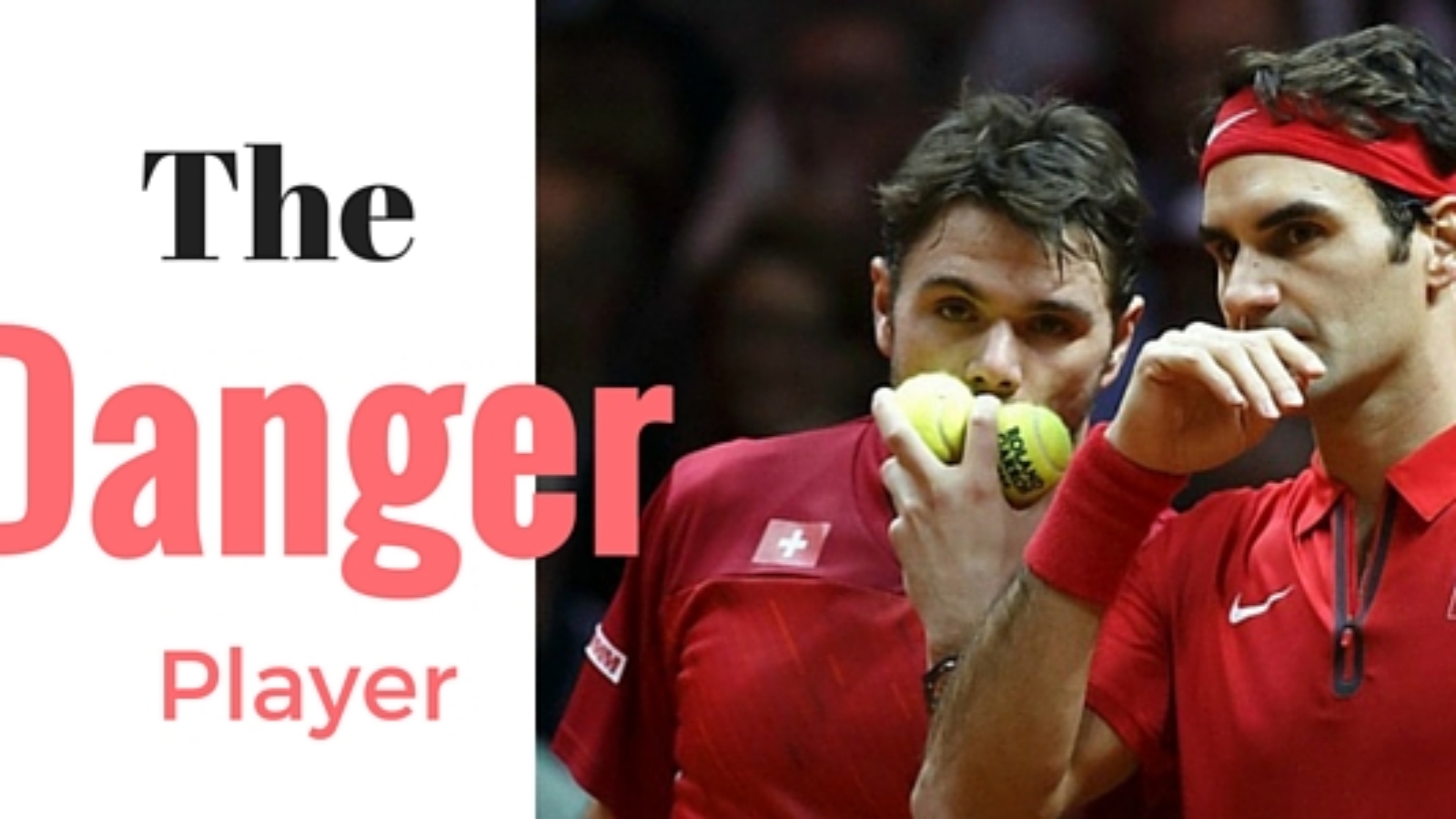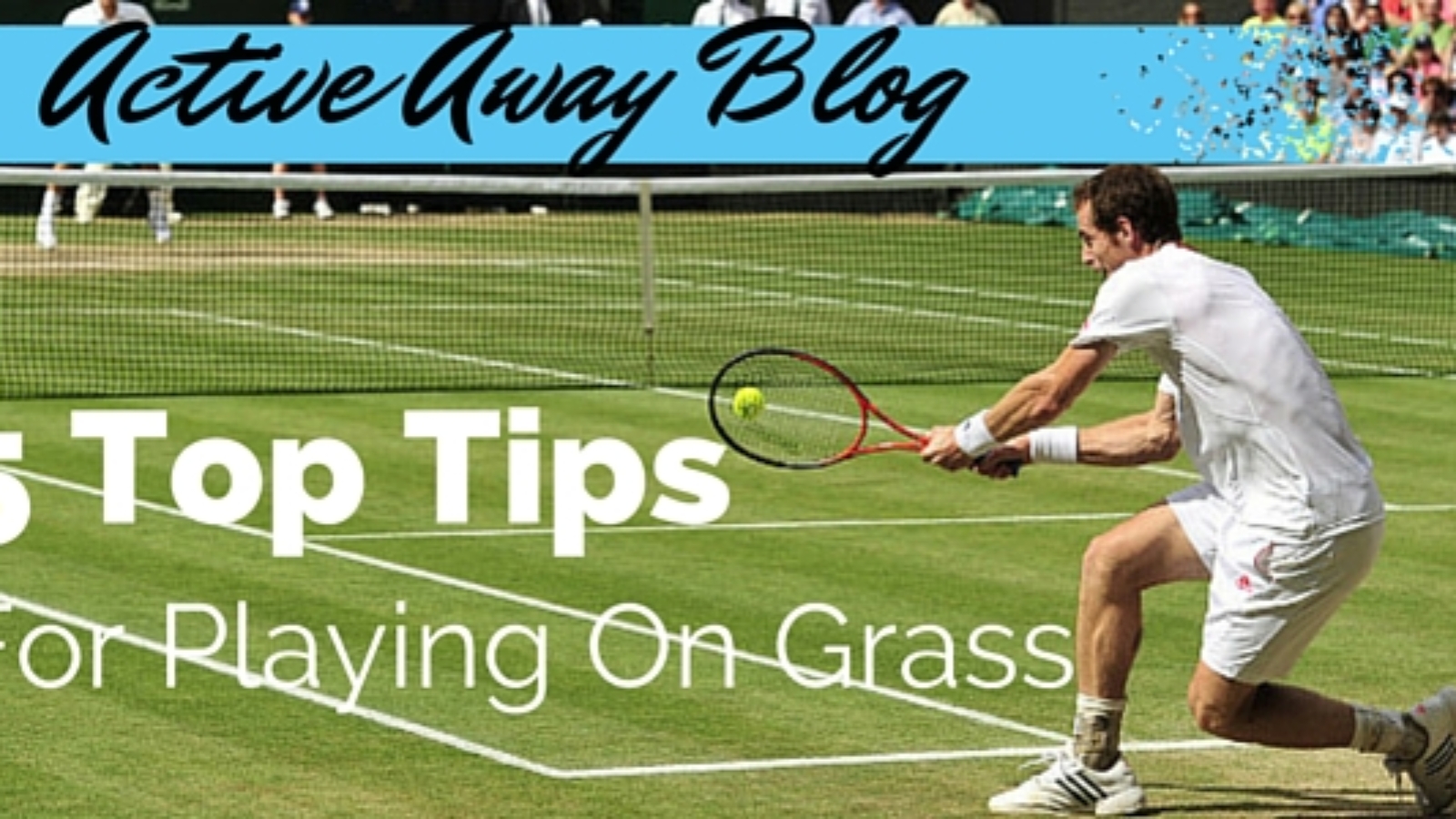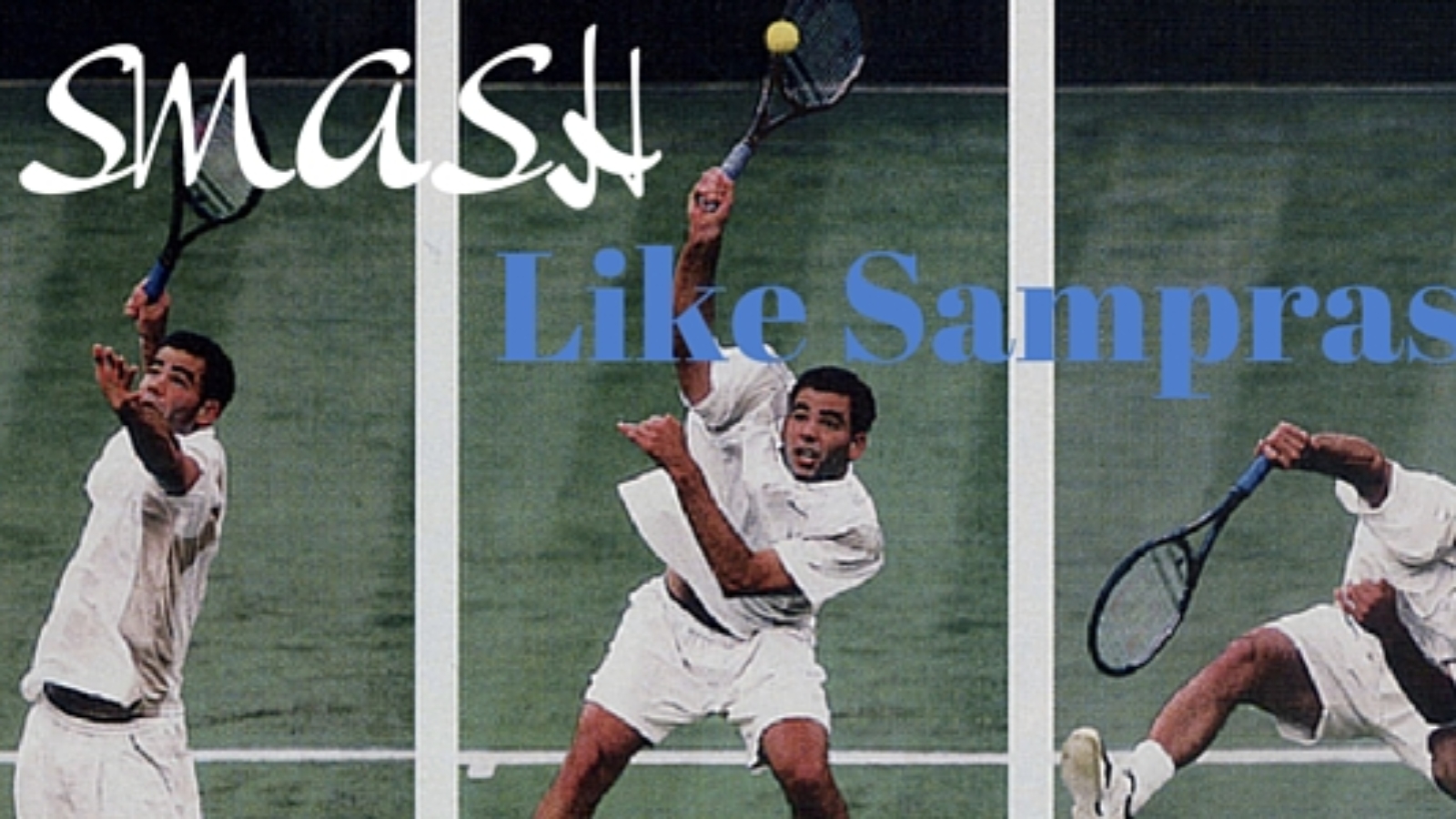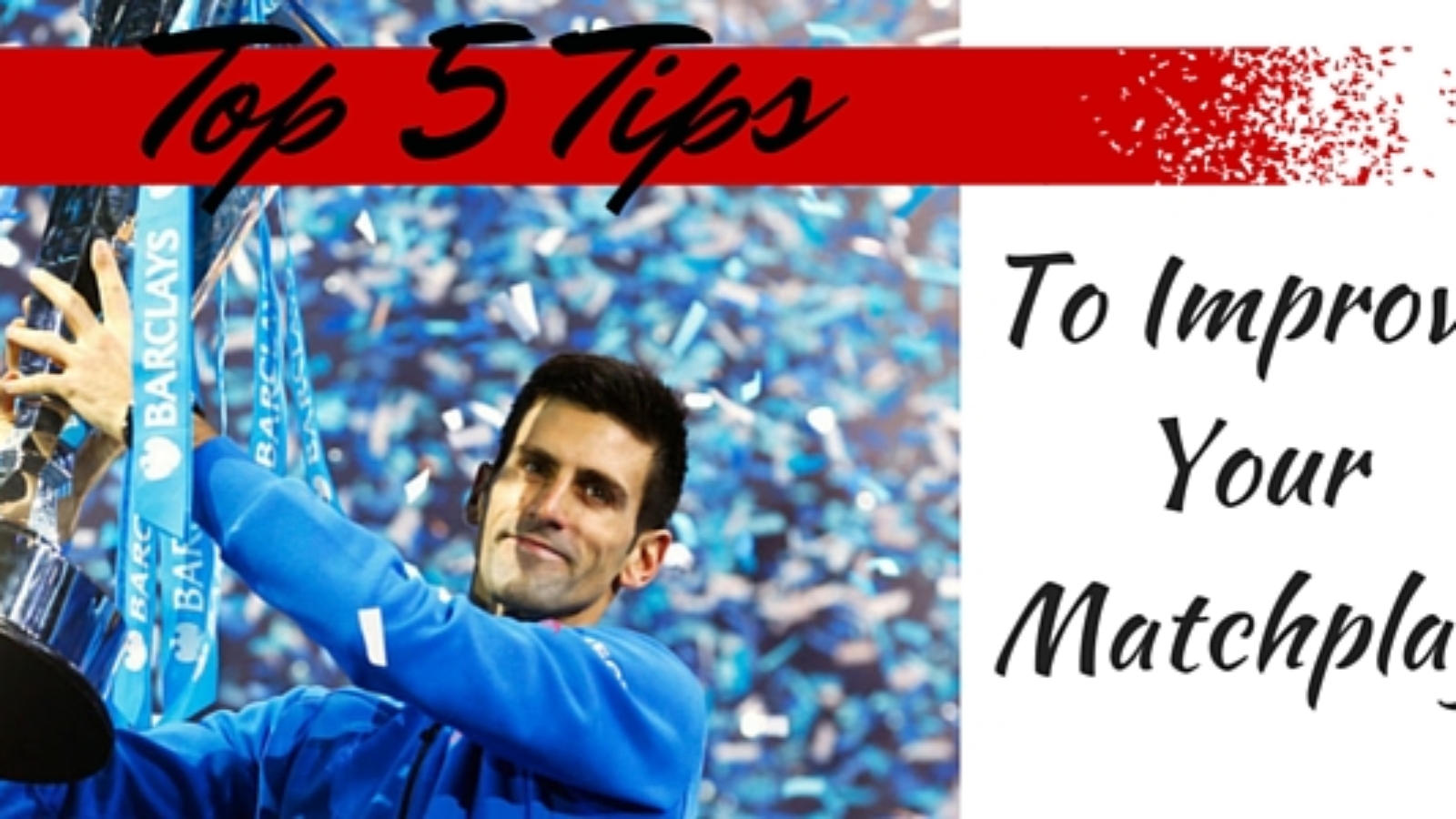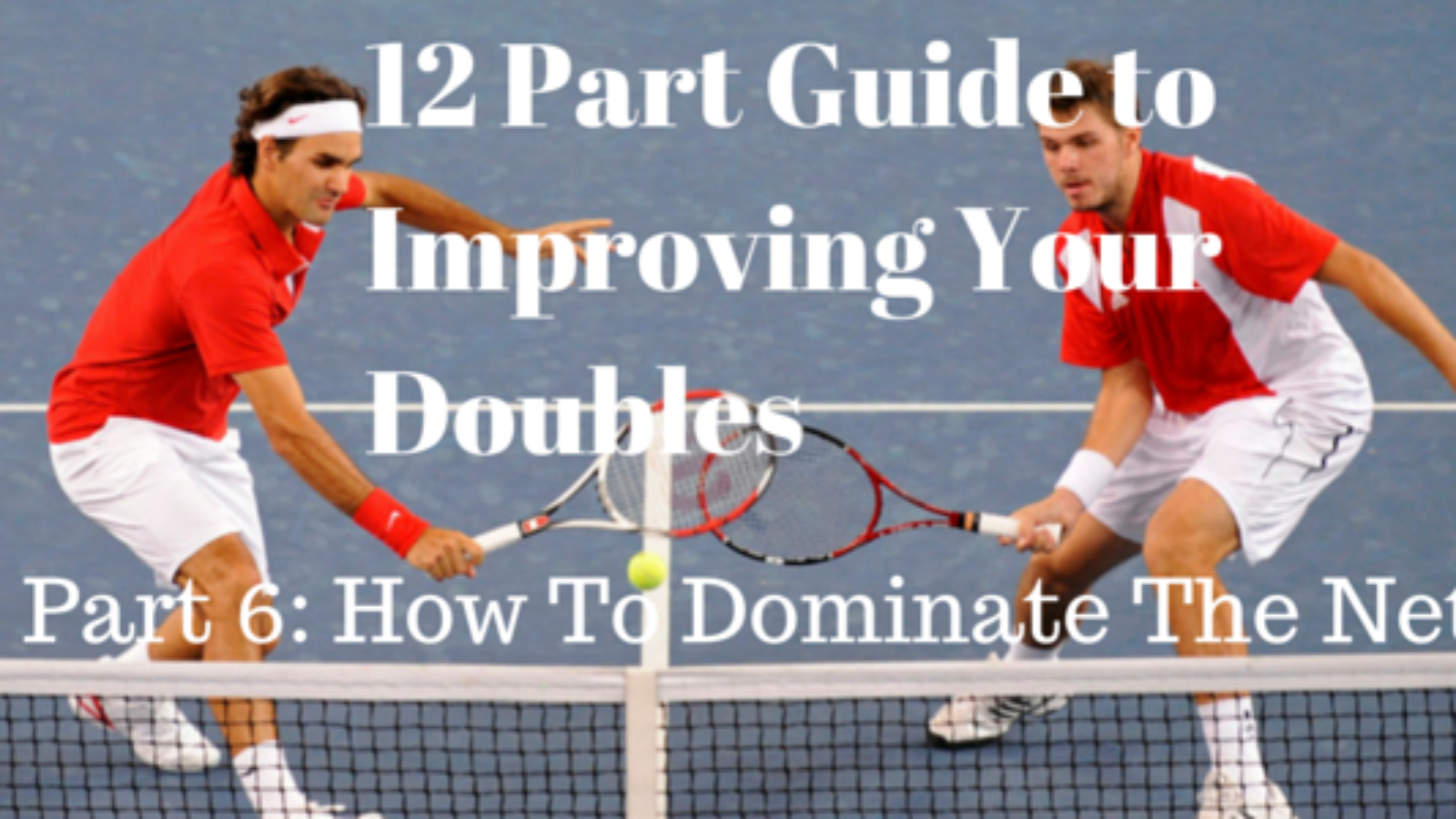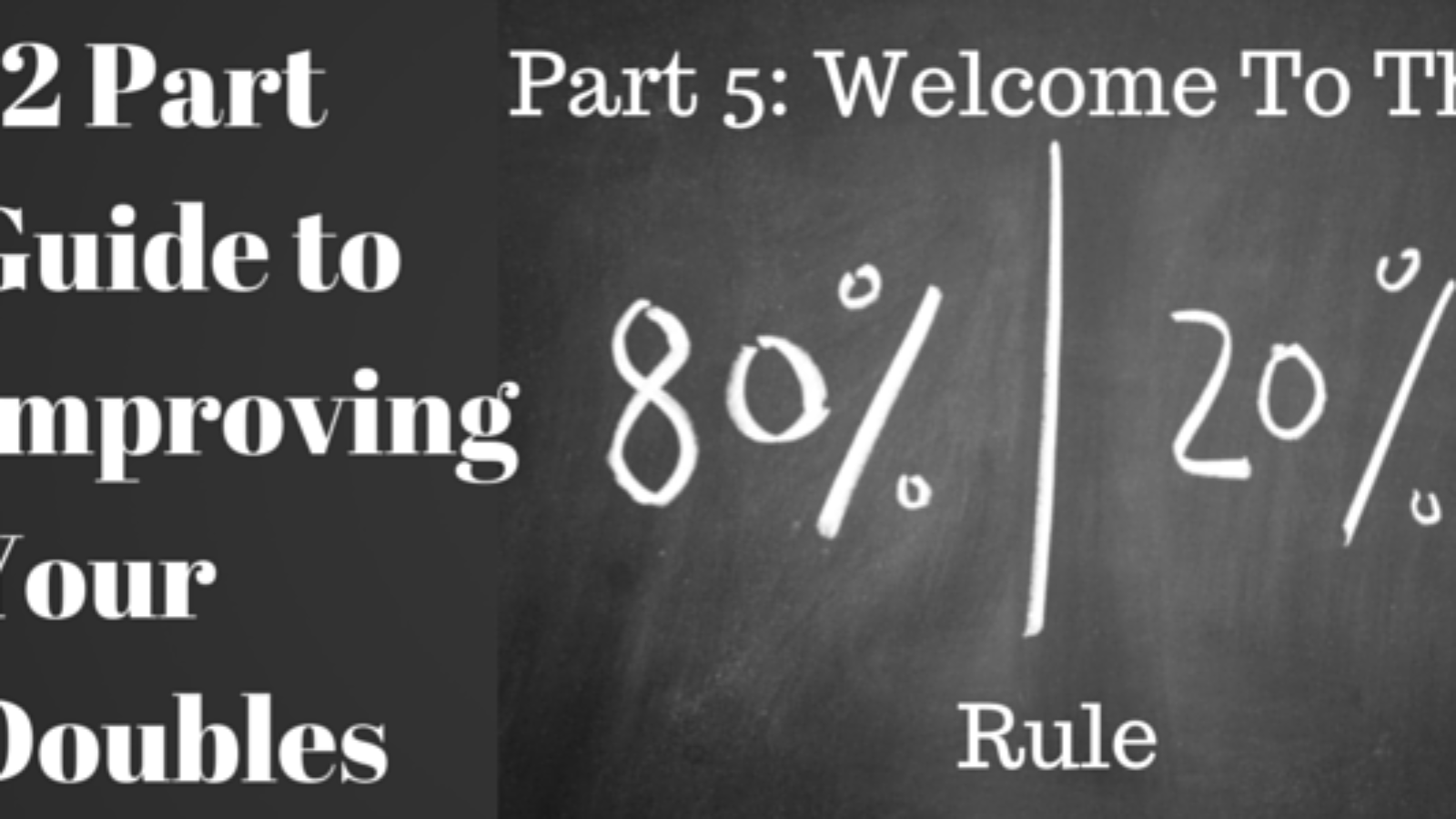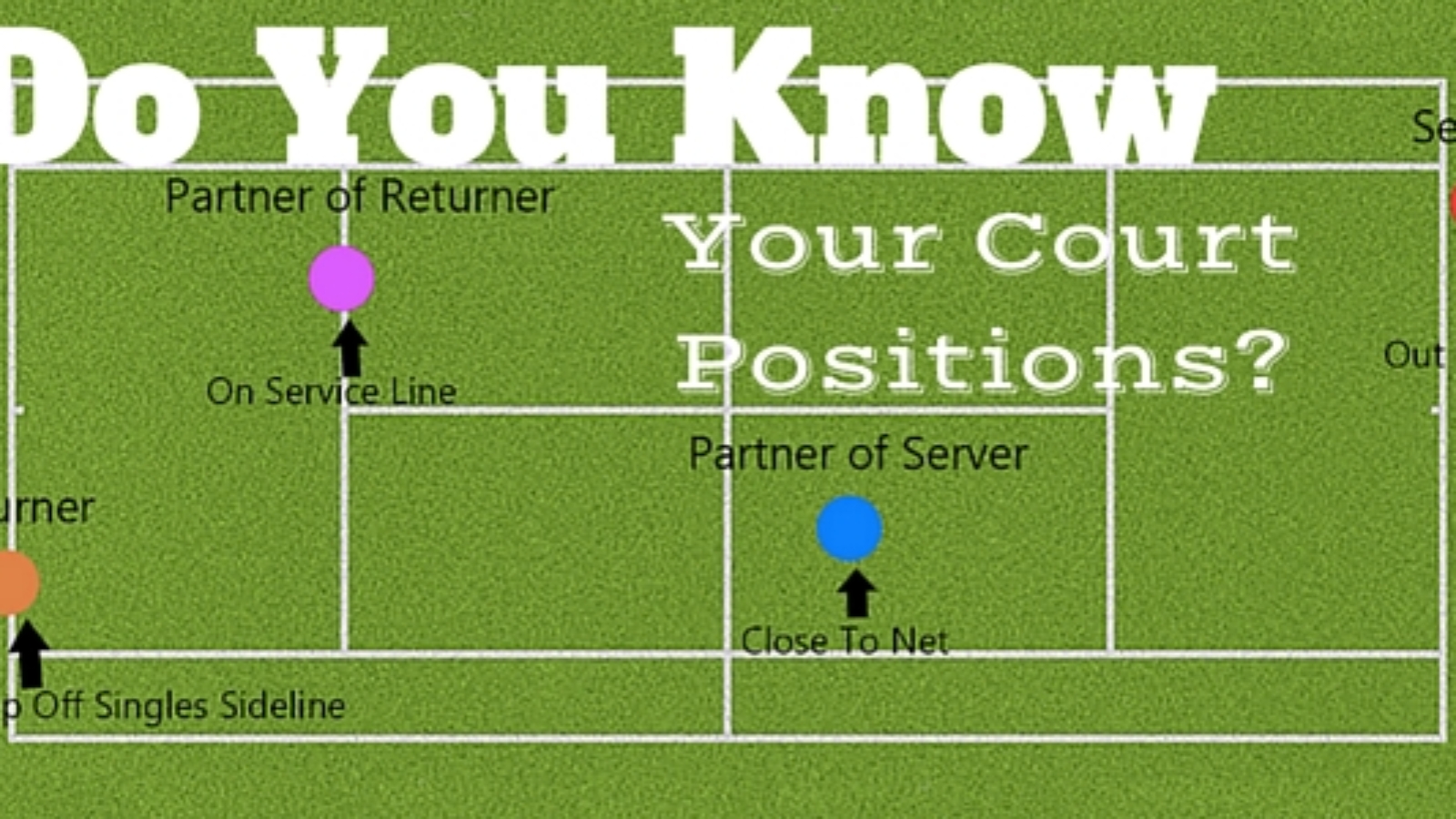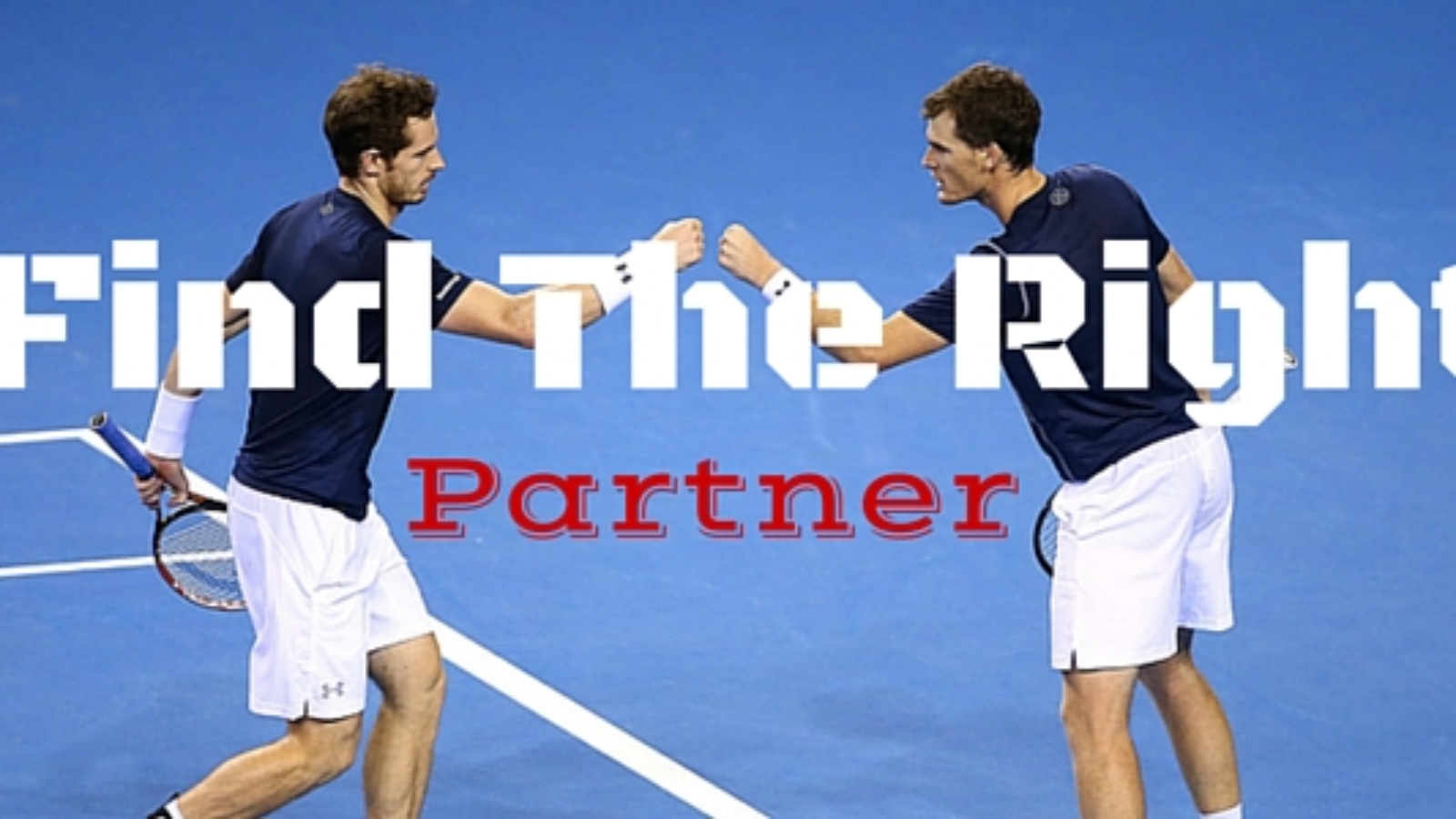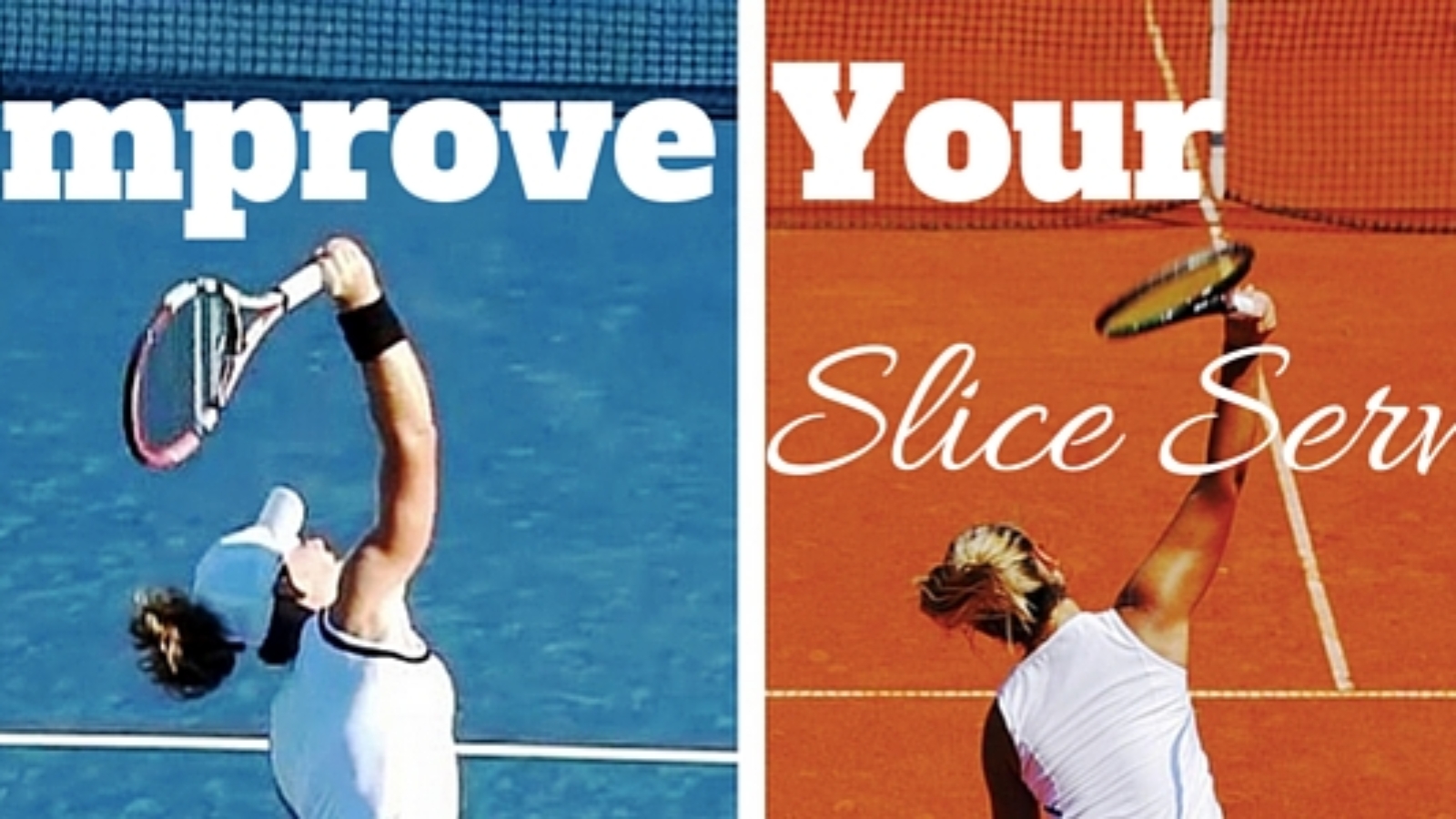Giving back. Doing our part for those less fortunate during Turkeys earthquake disaster.
Active Away Tennis Holidays Blog: Guide to Improving Your Doubles Part 12
- Where are you standing when you are the returners partner? You should be on the service line next to the T, almost in the centre of the court. The reason for this is that you are plugging the gap that the “Danger Player” (we discussed this in the previous blog) wants to hit in to, this is the easiest place for them to hit their volley. You stand here to give yourself half a chance of scraping that ball back but also to put them off a little, give them something else to think about.
- Where are you facing? You should have your hips, shoulders and eyes facing the “danger player” that player is your primary concern. Turn your body to face them, whatever you do, do not turn and look at your partner as they hit their return (this is hospital tennis).
- When you start in this position you are in a defensive position and this is where most recreational level players stay. I see very little movement from this position. As soon as the return is hit, one of two things are going to happen. Ether your partner hots a good return and fires it back to the server or its a bad return and the volleyer intercepts. As you are now standing in the correct position if the worst case happens and the “danger player” intercepts they can either volley it at you or go for the angle (good luck with the angle, that’s a 3 out of 10 shot). If your partner hits a good return back to the server this is when you need to move forward and become the “danger player”. The “danger player” position switches throughout the entire rally – so sorry there is no rest for you net players.
Time is short on the doubles court, and the person who understands it best has a huge advantage over others.
Tennis Holidays are a great way to make real progressions in your game, it is an intense week of learning new skills in the morning and putting them in to practise in the afternoons. Being able to play for 20 hours in one week means that you can really make changes in your game fast! Our Tennis Holidays our suitable for all levels whether you are a complete beginner through to county level players – everyone is welcome!
Active Away Tennis Holidays Blog: Guide to Improving Your Doubles Part 11
Did you manage to read part 10 last? We looked at improving your smash, I had some great feedback from that blog post. If you haven’t read it yet, click here to have a read.
In this post we are going to look at the player who is the servers partner. Picture the scene, your partner is ready to hit their first serve. You are correctly The Danger Player, as you are the first person that can have a real impact on the point (depending on how good your partners serve is). But where are you standing? Who are you focused on? What are you thinking about doing? Where are you aiming? Three questions that we are going to work through the answers to.
- Where are you standing? There are two elements to this answer, how far up the court are you and how far in to the court are you. There is no absolute hard and fast rule about where you should be as this will depend on how offensive your partners serve is and how athletic you are. There are however a couple of principles you can follow.
- In terms how wide you stand the simple rule is you need to be able to cover the trams in one step. At a professional level they probably stand with their outside foot in the middle of the service box, they can get away from this as they read the game fast and incredibly athletic.
- How far up, as a general rule I would suggest being approx half way up the service box
- Who are you focused on? The key player for you here is obviously the returner. Focus all of your concentration on them, make sure you are facing them with an aim to try to intercept the return.
- What do you want to do? Your goal is to intercept their return. If they have not once hit down your line you should feel quite free to intercept the return, they might not even be able to hit down the line – ask them this question. Don’t feel like you need to run across the entire court, just ensure that when you move, you move diagonally forward cutting down the angle, you will not need to cross the centre line to intercept effectively.
- Where are you aiming? This is simple if you intercept and you make contact with the ball above the height of the net you aim at the shoe laces of your opponent. If the ball is below net height do you best to control the volley back to the baseline. These rules are set – use them and this will make a huge difference to your game.
Tennis Holidays are a great way to make real progressions in your game, it is an intense week of learning new skills in the morning and putting them in to practise in the afternoons. Being able to play for 20 hours in one week means that you can really make changes in your game fast! Our Tennis Holidays our suitable for all levels whether you are a complete beginner through to county level players – everyone is welcome!
Active Away Tennis Holidays Blog: Grass Court Tips
The first thing to know about grass courts is that they’re fast – much faster than clay and hard courts.
When the ball hits the surface, blades of grass are flattened and the ball skids off the court fast and low.
By late summer, when the grass has been worn down, you’ll also find the bounce is very unpredictable.
IS IT ALL SERVE-AND-VOLLEY?
Big servers have always been successful at Wimbledon with the ball flying off the surface. And those who have mixed it up with a solid volley have won many titles at SW19.
Serve-and-volley play works for a number of reasons:
- it keeps the ball off the ground so you avoid unpredictable bounces
- fast serves are made faster because the ball skids off the court
You should also develop a good sliced backhand since the ball stays lower to the ground.
But it’s not true that only serve-and-volley players prosper – in fact, on the tour there are few serve-and-volleyers left.
Baseline players need to think about ending points quickly as well – if you’re a slogger, it’s important to work on hitting powerful winners and aiming down the line.
Active Away Tennis Holidays Blog: Guide to Improving Your Doubles Part 10
Did you manage to read part 9 last week based on improving your volley technique, I had some great feedback from that blog post. If you haven’t read it yet, click here to have a read.
In the part we are going to look at simple ways to improve your smash, specifically at the arm movement. As a doubles player, the smash is an essential weapon in your arsenal since you are looking to spend the majority of your time at the net and closing the net down.
Essential Elements
The key to improving your overhead is understanding, learning, and practising a three essential elements:
- Unit turn
- Movement (footwork)
- The arm swing
In this blog will will focus on the arm movement.
Before I start discussing the arm moevment, I want to stress the necessity to learn and to use the continental grip around the net, on the serve, and on the overhead. The continental grip, along with a good unit turn as described next, is what allows greater racket acceleration and, therefore, ball speed.
The arm swing
The first step to creating a great arm swing, as in all the shots, it is creating the turn position with your feet and torso as described in part 8.
The second step is getting to the tick or trophy position. There are a 2 ways to do this:
- The racket drop. The racket falls along the side of the torso with the tip pointing more or less straight down at the court, then swings up like a pendulum in to a tick position creating a lot of momentum.
- The abbreviated takeback. Just like on Rafa’s serve the racket doesn’t drop instead it comes straight to the tick/trophy position
You can use either of these methods but bear in mind if you don’t have much time option 2 would be used.
The third step is the swing to contact. The simplest way to think of this is think as though you are throwing your racket at the ball., if you over think this and break it down in to too much detail you will struggle. If you have a correct relaxed service motion, you shouldn’t have to think about all this too much and it will probably happen naturally.
A simple way to improve this motion is to practise throwing, (as a guide you should be to be able to throw the ball from the baseline to at least the service line on the other side), if you cant do this then practise, if you can do this you should be able to generate good racket speed.
Overall, what makes the overhead difficult is the ability to move in position with the proper turn position. The unit turn and the movement, I believe, are the two areas where the average player needs to focus. The arm swing is important, but as your serve arm swing improves in this area so will your overhead swing. As I mentioned above, conquering the ability to do the cross steps as you initiate the turn will go a long way in making the overhead the best part of your game.
The Overhead Game
There is a great live ball overhead drill that I have used many years with my high school doubles teams to work on implementing the overhead in matches.
One team is back at the baseline and one team is at the net. Your coach or one of the back players starts the point by lobbing to the net players. The lob feed should not be too tough or too easy. The net players cannot let the ball bounce either on the lob or the volleys.
After the lob is hit, the point is live. The baseline players can do anything they want — lob, hit, go to the net, etc.
First team to five points wins, then everyone rotates (clockwise) one position and the game starts again. Rotating the positions gives the players practice from both halves of the court, which is important because of the differences in the angles.
This drill is a great way to just get completely comfortable with hitting overheads everywhere on the court. Even if you are a singles player, it gives you the repetitions and the variety of movement and positions on the court that you need.
If you haven’t really developed an overhead, this game can be difficult at first because so many of the overheads are hit while moving back. Overall, though, it’s the best way I know of to develop those critical cross steps. You’ll know you are getting better when the team hitting the overheads starts to win the majority of the games.
Tennis Holidays are a great way to make real progressions in your game, it is an intense week of learning new skills in the morning and putting them in to practise in the afternoons. Being able to play for 20 hours in one week means that you can really make changes in your game fast! Our Tennis Holidays our suitable for all levels whether you are a complete beginner through to county level players – everyone is welcome!
Active Away Tennis Holidays Blog : Tennis Crimes part 5
YOURS, YOURS !!!!!
Hi everyone and welcome to part 5 of our tennis crimes series, todays crime is again one we see all the time on our tennis holidays and focuses within the doubles game and really highlights the importance of communication.

So here’s the scenario, you and your doubles partner have attacked the net. Your approach wasn’t fantastic and your tactically astute opponents have been able to guide the ball accurately down the middle causing confusion and disarray between you and your partner… and here comes the crime, both players shout “yours” and the ball sails down the middle of the court for an easy winner with both players unhappy at their partners lack of assertiveness.
So ask yourself these questions:
-
What does your ready position look like?
-
When should you be in the ready position?
The ready position is the foundation for almost all of your footwork when you are playing tennis. How you move around the tennis court in one way or another relates directly back to your ready position.
[divider scroll_text=””]
 A good ready position
A good ready position
- You want your feet about shoulder width apart, or a little bit wider.
- Your knees should be slightly bent and your weight should be on the balls of your feet, not the heels.
- Your upper body should be relaxed, with your arms and the tennis racket out in front of your body.
- Angle the head of your racket up a little bit.
- It’s also important that your upper body should not be hunched over, bending forward. Your back should be straight so that with your legs bent it is almost like you are sitting in a chair.
- Your eyes should be on your opponent and especially the tennis ball, not looking down at the tennis court.
- Practically speaking, when you are in the ready position you want to be about a foot shorter than your normal height, which is a good athletic height.
“GET READY, STAY READY”
Active Away Tennis Holidays Blog: Guide to Improving Your Doubles Part 9
Did you manage to read part 8 last week based on improving your smash we focused on talking about the importance of the unit turn. People seemed to really like it. If you haven’t read it yet, click here to have a read.
In the part we are going to look at the next key element to improving your smash, your movement. The smash is an essential weapon in your arsenal since you are looking to spend the majority of your time at the net and closing the net down.
Essential Elements
The key to improving your overhead is understanding, learning, and practising a three essential elements:
- Unit turn
- Movement (footwork)
- The arm swing
In this blog post will will focus on your movement for the smash, the arm swing will be covered in part 10.
Before I start discussing the movement, again I want to reiterate the necessity to learn and to use the continental grip around the net, on the serve, and on the overhead. The continental grip, along with a good unit turn as described next, is what allows greater racket acceleration and, therefore, ball speed.
Movement
Beyond the technical differences in the preparation, the biggest difference from the serve is that the player must move to the ball. How a player moves his/her feet to position themselves on any shot is key to achieving great success in your game. But on the overhead, the footwork is especially important and can be the difference between having no overhead and a having a very good one.
On the groundstrokes, players with good hands can sometimes get away with bad movement and still make a decent shot. But the overhead is a different story. Unlike the serve, which is hit from the same position on the court every time, the ball on the overhead is moving toward your side of the court. You can hit an overhead from literally anywhere on your side of the net. The ball is also descending from a much greater height than the serve toss. This is important because as the ball drops, it accelerates due to gravity. For these reasons it is vital to be ready when the ball passes through the hitting zone.
The ability to use Carioka (cross) and shuffle (side) are the keys to moving upward and back. These steps can also be used to move on diagonals across the court when the player needs to move sideways at the same time. If you want to maximize your ability to move on most overheads, do not rely only on shuffle steps alone. This is where most players make their first mistake.
Shuffling is an inefficient way of moving either forward or backward when needing to move over a greater distance. There are many instances where you will see a great player shuffle back or forward to hit an overhead, but usually it is on a ball where they have a lot of time, and/or not much movement either forward or back is required.
They come into play on all the shots in the game at certain times. They are just especially critical on the overhead.
Mastering the ability to rotate your body and then use these crossing steps will increase the distance you can cover – and your power on the overhead. The tough thing about gaining this ability is to be able to do it with the arms moving upwards into the air.
Backward Movement
The key to moving backward is to take a cross step backward with the front foot toward the baseline. So the front foot actually crosses over the rear foot in this first move.
In many ways, the best way to practice this crossstep movement is without the ball. Put yourself into the turn position with your arms up and move backward with the front foot crossing in front of the rear foot. Keep practicing it until you can run at full speed and still feel secure in your balance.
As you get more confident with this movement you can experiment with jumping from the back leg to make the upward motion more explosive. Most good players do this on most overheads because they are moving back at the time of the hit to deal with the lob attempts of opponents.
Even on a bounce overhead, the crosscourt movement is usually crucial to getting into position quickly. Even when you get what seems like a relatively easy overhead, get into the habit of taking that initial backwards cross step. You will be amazed how fast and far back you can get using the correct footwork.
Forward Movement
The key to forward movement is similar to the backward movement. When they have any significant distance to cover, the players will use the cross step pattern. Now the first step is forward with the rear foot.
The side on which the rear foot crosses the front foot depends on whether the player is moving forward to the left or right. When the player moves to the right and forward, the rear foot will cross to the right side of the front foot. When moving left and forward, the rear foot will cross to left side of the front foot. In each case, though, the rear foot is stepping towards the net.
Sometimes there is a combination of cross stepping and shuffling after the cross step, depending how far or how fast the player has to move. But, most importantly, the first reaction with your feet is the key. The cross step is what facilitates and maintains the unit turn as a player moves to position for the lob.
Tennis Holidays are a great way to make real progressions in your game, it is an intense week of learning new skills in the morning and putting them in to practise in the afternoons. Being able to play for 20 hours in one week means that you can really make changes in your game fast! Our Tennis Holidays our suitable for all levels whether you are a complete beginner through to county level players – everyone is welcome!
Active Away Tennis Holidays Blog : Tennis Crimes part 4
GET READY !!!!!
Hi everyone and welcome to part four of our tennis crimes blog. At active away cannot stress enough how strongly we feel about today’s blog. Nothing frustrates me more as a tennis coach than seeing one of our players on our tennis holidays about to return a serve but actually looks like they are waiting for a bus.
 The “ready” position is the best way to prepare for an incoming ball, it allows you to be balanced but still allows room to be sharp and move dynamically either way, making it much more difficult for your opponent to cause damage with their strike.
The “ready” position is the best way to prepare for an incoming ball, it allows you to be balanced but still allows room to be sharp and move dynamically either way, making it much more difficult for your opponent to cause damage with their strike.
We see a few crimes committed relating to this on our tennis holidays. Firstly the ‘lock up and throw away the key’ crime is never being ready; racket down by your side and flat footed. You are simply fighting a losing battle if you aren’t ready for the ball.
The second crime we see is almost as bad; the player that before the point is about to begin looks so sharp, so strong, so dynamic . However as soon as the point begins they fall back into the flat footed habits they had before just watching the game go past them.
The ready position is not the only thing you need to do be ready, it’s simply the start of having a ready attitude. The work you do in between your shots is crucial in the quest to make every ball you hit the best it can possibly be.
So ask yourself these questions:
-
What does your ready position look like?
-
When should you be in the ready position?
The ready position is the foundation for almost all of your footwork when you are playing tennis. How you move around the tennis court in one way or another relates directly back to your ready position.
[divider scroll_text=””]
 A good ready position
A good ready position
- You want your feet about shoulder width apart, or a little bit wider.
- Your knees should be slightly bent and your weight should be on the balls of your feet, not the heels.
- Your upper body should be relaxed, with your arms and the tennis racket out in front of your body.
- Angle the head of your racket up a little bit.
- It’s also important that your upper body should not be hunched over, bending forward. Your back should be straight so that with your legs bent it is almost like you are sitting in a chair.
- Your eyes should be on your opponent and especially the tennis ball, not looking down at the tennis court.
- Practically speaking, when you are in the ready position you want to be about a foot shorter than your normal height, which is a good athletic height.
“GET READY, STAY READY”
Active Away Tennis Holidays Blog : Tennis Crimes part 3
The ‘EASY’ Smash !!!!
Hi everyone and welcome to part three of our Tennis crimes Blog, I hope you are all enjoying them and getting the chance to practice guarding against committing the crimes!!
We are going to start this weeks tennis crime by painting a really clear picture.
You’ve hit a crushing forehand down the line allowing yourself to stride into the net ready to put away the inevitable ‘easy’ volley… however, here comes the problem, you’re playing against the most annoying player you can play, the dreaded “hacker”. He scrambles to the forehand and strikes the ball high in the sky… and in here lies the crime, its something we see time and time again on our tennis holidays, the net player has moved forward still looking proud of the previous forehand they hit but you forget to move, the ball goes high up above your head, somehow your feet suddenly feel like they are stuck in super glue and the rest of your body moves in slow motion.
 Then comes the crime, despite being in a terrible position we still try and hit the ball as hard as we possibly can, the ball (if indeed any contact is made) goes flying at 200mph over the back fence and bounces away down the road.
Then comes the crime, despite being in a terrible position we still try and hit the ball as hard as we possibly can, the ball (if indeed any contact is made) goes flying at 200mph over the back fence and bounces away down the road.
So why do we see this happen so much on our tennis holidays, firstly we believe part of the problem is in the name! The name SMASH implies that we have to hit the ball as hard as we can, this simply isn’t true, a shot hit from overhead could have any tactical intention completely dependant on the ball you receive. You could indeed be defending a ‘smash’.
So here is a drill to help you with your overhead shots.
Ask a friend/coach to hit a few balls to you that could be hit overhead, ask the player/coach to shout out “hit” or “catch” leaving it as late as they can, if you’re not in a good enough position to do be able to do both then you are not finding a good enough position to catch the ball in your left hand. This means you are probably not in a good enough position to be able to hit an effective consistent overhead.
Active Away Tennis Holidays Blog: Guide to Improving Your Doubles Part 7
If you have been away with us before, you are almost certainly going to have heard us talk about this.
Steve’s family used to run a very successful double glazing factory in his home county of Staffordshire. We developed this technique to help improve your volleys while Steve was attempting to upsell some double glazing on one of the holidays – just kidding 😉
In part six we talked about improving your lateral movement to help to move better as a team, if you haven’t read part 6 or would like a recap you can read it by clicking here. Today we are going to give you some tips on how to improve your volleys. To do this you have to use a little visualisation.
Volleys are technically the most simple shot to learn but one of the hardest shots to master.
We often find that one of the main issues people have with their volleys is that they try and do to much with them. They try to swing to much and generate to much pace, this has a couple of consequences.
- Because you have a lot less time when you are at the net if you try to swing you wont have enough time to get ready for the nest shot – you end up looking like you are manically swatting flies.
- The volley is about control, you are generally deflecting pace rather than add pace. Volleying is all about feel; there are 4 main feelings you should have on your volleys, a block (deflecting pace), a push (adding pace in a controlled manner), a catch (taking pace off) and a punch (adding pace) we will be delving in to this more at a later stage.
[divider scroll_text=””]
The basic principle of our double glazing theory is to imagine that you have a pane of glass running through the middle of your body running from shoulder to shoulder all the way to the floor, you then visualise another pane of glass about 1ft in front of you with a pocket of air in between. Got it?
The two panes of glass move where ever you go. The idea is that you will always (well 90%) of the time keep the racket between the two panes of the glass when you are volleying. i.e if you take the racket back past your shoulder line you have broken the back pane of glass if you follow through then you have smashed the front pane of glass.
To volley successfully try to always keep the racket in between the glass. The exception to this maybe on a high volley with no pace when you need to inject a little pace in to the shot.
Tennis Holidays are a great way to make real progressions in your game, it is an intense week of learning new skills in the morning and putting them in to practise in the afternoons. Being able to play for 20 hours in one week means that you can really make changes in your game fast! Our Tennis Holidays our suitable for all levels whether you are a complete beginner through to county level players – everyone is welcome!
Active Away Tennis Holidays Blog: Top 5 Tips to Improve Your Matchplay
Using the skills you learn in practice and implementing them into a match situation is the toughest thing to achieve in tennis. A variety of factors can hinder your performance such as nerves, tactics or lack of confidence. To combat this we have put together our top five tips to help you unlock your potential in those tough matches!
[divider scroll_text=””]
1. Working out your own and your opponents strengths and weaknesses
It is key to know your main strengths as a player so when you play a match you are then able to give yourself the best opportunity to use them e.g If your strength is your forehand you should be looking to use this shot as often as possible. As soon as you step on the court and begin warming up with your opponent you should be analysing their strengths and weaknesses. Once identified you can then use your shots to exploit their weaknesses and neutralise their strengths
[divider scroll_text=””]
2. Staying in the present mentality
In tennis it is easy to let your head drop when things are going badly. It is vital to remain positive at all time – focus on one point at a time and try to visualise yourself winning each point. Trying to remain positive will really help to raise your game and losing your PMA can cost you a match. If you lose a point its in the past, there is nothing you can do to effect it. If you think about the future your brain will run away with you. Focus on the here and now, stay positive and make SMART decisions.
[divider scroll_text=””]
3. Early Preparation
This is something that unlike most aspects of tennis you have full control over. Be prepared both on and off the court – off the court make sure you arrive on time to the match to enable a sufficient warm up both physically and mentally. On the court make sure you are recovering to an appropriate ready position and taking your racket back as early as possible.
[divider scroll_text=””]
4. Shot Selection – Attack/Rally/Defend
Be SMART with your shot selection. Don’t rush for a winner, build the point and wait for your opportunities to arise in the point.
Always play the percentages, when things aren’t going your way think of the basics – am I hitting the ball high enough over the net? Am I hitting with enough length
[divider scroll_text=””]
5. Playing your opponent mentally
In a match situation you need to be able to mentally ‘get inside’ your opponents mind to help influence how they play. You should then pounce on any mental frailties they exhibit – for example if they are struggling with their second serve you should then stand closer to the service line to apply further pressure.
So next time you have a match and you find yourself struggling think back to these 5 points and ask yourself whether you are truthfully implementing them!
Active Away Tennis Holidays Blog : Tennis Crimes Part 2
Having A Plan
Hi everyone and welcome again to part 2 on our ‘tennis crimes’ series. On our tennis holidays I think back to what the most common request to improve people’s tennis is, while occasionally people would like to be able to send down a 150 mph rocket 1st serve or learn to craft a stunning slice backhand fizzing off the court, the overwhelming favourite request is “I’d like to be more consistent” or “I’d like to make less errors” both fantastic things to work on, if we as tennis players can achieve these then we will most definitely be collecting more points and winning more matches !!!
[divider scroll_text=””]
“If you fail to plan, you are planning to fail! – Benjamin Franklin”
[divider scroll_text=””]
So what does consistency really mean?
Well for us at active away it can mean a lot of things, I could in theory be consistent at hitting ‘lights out’ winners down the line, however in the long run its probably not a tactic that will pay off. So here’s the crime were going to be looking at today. On our tennis holidays you will often hear the coaches ask questions such as “what were you trying to do with that shot” and here comes the crime……….
“I have no idea what I was doing”
Well if we don’t know what we’re trying to do with the ball the likelihood is that it won’t be doing anything positive. This is often when we find he ball hitting the side fence or even when we start losing balls.
So how do we plan what to do with the tennis ball? Firstly it goes without saying that this is a difficult skill that can take years of practice and repetition. There are an awful lot of factors that can influence what we want to do with the ball and we only have a split second to make the choice, but here are a few to consider.
-
Where you are? Your court position will certainly have an influence on the type of shot you need to be hitting, are you too deep to attack? Are you too wide to go back cross court?
-
Where is your opponent? Again a huge influence when planning your next shot. Are they out if position? Can I exploit the space?
-
What are your strengths and their weaknesses? It’s such a simple tactic in tennis but under used, the amount of times on our tennis holidays we see forehand to forehand rallies, try and find times where you can use your strength to your opponents weakness!
-
The ball you have received. Of course this is the biggest factor in our decision, is it spinning, is it fast, is it high?[divider scroll_text=””]
Practice
Here’s a really simple drill to help you put this in to practice, split every shot you hit into one of three categories; Defend, Rally, Attack.
-
Practise one: Rally with a partner and try to make a decision before you hit the ball. Call out either attack rally or defend using the above 4 questions to help influence your decision.
-
Practice two: Can you play a point and say which tactical intention you have before you hit the ball?
-
Practice three: Could you even play a whole set doing this?
This will help you understand your strengths and weaknesses as well as improving your decision making process at the same time. In time this will become much more natural, of course Andy Murray doesn’t say “DEFEND” as he chased back to scrape a ball off the baseline but I can guarantee it was something he worked on extensively as a junior making him one of the best tactical players in the game.
So remember on our tennis holidays. The coaches will be asking you “what were you trying to do with that all” if you answer with “I was trying to attack but It was the wrong choice” we can forgive you but if the answer is “I don’t know” you have committed a tennis crime!
You’ve been warned….. We are watching you !!!!!
Active Away Tennis Holidays Blog: Guide to Improving Your Doubles Part 6
In the last blog post we talked about our 80/20 rule and ho it helps you maintain a good position, if you haven’t read it yet you can read it by clicking here.
In this blog we are going to give you a few tips on how to move better at the net. This might surprise some people but its a fact: the key to tennis isn’t how well you hit the ball its how well you can move to enable you to hit the ball well.
There are two types of movement at the net vertical (forward and backward) and lateral (side to side) today we are going to give you a few tips on how to improve your lateral movement with you partner. Imagine the situation:
Situation 1: You have two players at the net (you and your partner) and two players at the back of the court:
- Be strong in the middle – to many times players leave a big gap down the middle because they are worried about being passed down the trams. Try to make sure you can reach across and tap each others rackets in one step. The majority of balls coming at you will come down the middle.
- Follow the line of the ball – Imagine you have a metal rod attached to both of you. If the ball goes to the player on the left you both move to the left, if it goes to the right you go to the right, you want to make sure that which ever direction you move one player moves to just inside their trams and their partner comes to just inside the centre line, try not to cross these lines.
- Use your advantage – If you are both right handed try to make sure if the ball comes down the middle the person with their forehand volley will take the shot.
Situation 2: You have two players at the net (you and your partner) and one player up and one player at the back of the court:
- Follow the same principles as above, the only difference being that there wont be such large lateral movements to be made as the majority of volleys (except for when finishing the point) will be directed back to the baseliner.
- The principles are the same if you hit a good angled volley to the baseliner you both follow the ball wider, if you hit more down the middle you follow the ball back to a more central position at the net.
Follow these three simple tips and I guarantee you that you will become impenetrable at the net, it will make it so much harder for your opponents to find gaps past you.
I hope you enjoyed reading this and can take a few of these thoughts in to your next match.
Tennis Holidays are a great way to make real progressions in your game, it is an intense week of learning new skills in the morning and putting them in to practise in the afternoons. Being able to play for 20 hours in one week means that you can really make changes in your game fast! Our Tennis Holidays our suitable for all levels whether you are a complete beginner through to county level players – everyone is welcome!
Active Away Tennis Holidays Blog : Tennis Crimes part 1
The Second Serve
Hi everyone and welcome to our Blog. If you have been on one of our tennis holidays you will have heard our coaches mention the dreaded ‘tennis crimes’! There are a few simple reminders that can help us all in our quest for a more consistent game. The first one we are going to talk about is the 2nd serve.
[divider scroll_text=””]
[quote align=”center” color=”#999999″]”you’re only as good as your second serve”[/quote]
As the old saying goes “you’re only as good as your second serve”. If it’s weak it’s a huge opportunity for your opponent to feast upon it. Throw in a few double faults and you’re in big trouble. A solid, dependable second serve can get you out of tough situations and can even cause problems for opponents. A truly reliable second serve can allow you to enjoy the freedom of a fully aggressive first serve knowing that the trusty second serve is a rock solid back up. It really is a crucial area and the percentage of points won on the 2nd serve is a massive indicator of the match result.
 So let’s look at the crime being committed all too often on our tennis holidays. Firstly the second serve going in the net – it’s a lock up and throw away the key crime! Good flight over the net married with good spin can cause your opponent damage without risking the net. There is simply very little benefit to hitting it low over the net on a second serve – it’s an extremely high-risk strategy with a relatively low percentage reward. As tennis players on the quest for consistency, we are searching out situations where we can achieve low risk-high reward scenarios. The second serve is one such scenario.[divider scroll_text=””]
So let’s look at the crime being committed all too often on our tennis holidays. Firstly the second serve going in the net – it’s a lock up and throw away the key crime! Good flight over the net married with good spin can cause your opponent damage without risking the net. There is simply very little benefit to hitting it low over the net on a second serve – it’s an extremely high-risk strategy with a relatively low percentage reward. As tennis players on the quest for consistency, we are searching out situations where we can achieve low risk-high reward scenarios. The second serve is one such scenario.[divider scroll_text=””]
 The stats don’t lie…. While none of the ‘big 4’ occupy the top 4 places in first serve percentage points won, they dominate the second serve percentage points won with Novak out in front. The Djokovic machine rarely makes unforced errors and many coaches and experts alike believe the key to Novak’s success is his second serve.
The stats don’t lie…. While none of the ‘big 4’ occupy the top 4 places in first serve percentage points won, they dominate the second serve percentage points won with Novak out in front. The Djokovic machine rarely makes unforced errors and many coaches and experts alike believe the key to Novak’s success is his second serve.
A good second serve is almost always a spin serve. It just gives you many more options and keeps your opponent guessing – the same way Sampras kept his opponents guessing. We must practice it guys – we now know how important this part of the game is. There is no need to be weak at the knees, trembling with every bounce of the ball – however do not neglect this area in your practice.
Practice hitting targets with a good margin for error. Can you hit a second serve and make the second bounce go outside the court ? Maybe play a practice match or two only giving yourself one serve !
So…. Remember, the second serve is not our enemy it can be a great friend. Be aggressive but be aggressive with flight and spin !! If you’re on one of our holidays and we catch you hitting the net on the second serve you can expect a timely reminder that you are committing one of our most serious tennis crimes !!!!
All the tennis coaches on the Active Away tennis holidays have been instructed to have their eyes on your second serves!
You’ve been warned….. We are watching you !!!!!
Active Away Tennis Holidays Blog: Guide to Improving Your Doubles Part 5
Carrying on from part 4 last week where we looked at the three basic doubles position if you haven’t read part 4 please click here to have a read. This week I want to have a look at the one up one back situation.I think we all know that in an ideal world we wouldn’t really like to be in this position but at the same time I think most of us would agree that at a recreation level (even up to top club level) the one up one back situation happens a high percentage of the time. Our 80/20 rule is one of the keys to unlock the door and turn your team in to the offensive pair at the net and put the other team on the back foot.
There are 3 ways to turn a neutral/defensive position in to an attacking one:
-
Holding your ground at the back of the court, waiting for a short ball to pounce on
-
Hitting a strong shot to put your opponent in a defensive position and following in behind your shot
-
Ghosting in behind a high deep shot without your opponent seeing you
The 80/20 rule is all about your recovery position. Its simple 80% of the time before you hit the ball you should be either holding your ground or moving forwards to strike the ball, 20% of the time you will have to move back. You have to recover to an appropriate ready position that allows you to do this.Lets imagine your opponent hits a ball that you need to move forwards to but not short enough to allow you to follow it in to the net. After you hit your shot you need to recover back (how far back depends on a number of factors). If you don’t recover you will find yourself out of position for the next shot likely having to move backwards as you strike the ball. If you recover to your correct 80/20 position this will allow you to hold your ground/move forwards for the shot rather than being on your back foot.
90% of you reading this blog post are going to be well aware of what i mean by a recovery position but I would challenge you to ask yourself do you think you work hard enough off the ball to maintain a good recovery position? We believe that a sloppy recovery position leads to being out of position a high percentage of the time.
I hope you enjoyed reading this and can take a few of these thoughts in to your next match.
Tennis Holidays are a great way to make real progressions in your game, it is an intense week of learning new skills in the morning and putting them in to practise in the afternoons. Being able to play for 20 hours in one week means that you can really make changes in your game fast! Our Tennis Holidays our suitable for all levels whether you are a complete beginner through to county level players – everyone is welcome!
Active Away Tennis Holidays Blog: KIS Coaching – Improve your doubles Part 4
Did you manage to read part 3? We focused on the importance of finding the right partner. People seemed to really like it. If you haven’t read it yet, click here to have a read.
Now that you have found the right partner and worked on the first ball (serve and return), it’s time to talk about court positioning. There are three basic court positions for doubles: two up, two back and one up, one back.
[divider scroll_text=””]
Two Up
 Two up means that both players are positioned at the net. This is the best of the three because you are offensive and can cover most of the court from this configuration.The one wild card is the lob. Because there is nobody there to back you up, covering the lob can be tricky for the weekend warrior. You must learn to recognize the lob earlier by watching the opponent’s court position and racket face.For example, if you’ve come in behind a deep approach shot or hit a deep first volley and you see your opponent back up, odds are you will see a lob. Anticipation is the key to covering the lob effectively.
Two up means that both players are positioned at the net. This is the best of the three because you are offensive and can cover most of the court from this configuration.The one wild card is the lob. Because there is nobody there to back you up, covering the lob can be tricky for the weekend warrior. You must learn to recognize the lob earlier by watching the opponent’s court position and racket face.For example, if you’ve come in behind a deep approach shot or hit a deep first volley and you see your opponent back up, odds are you will see a lob. Anticipation is the key to covering the lob effectively.
[divider scroll_text=””]
Two Back
 Two back means that both players are positioned on the baseline. Although most of the court is covered and you do not have to worry about the lob, this is not considered as effective as two up because it is difficult to be offensive from the baseline in doubles. This configuration should be used if you are and your partner are not good volleyers, or at times when your opponents are moving a lot at the net and outplaying you from there. Then the best bet is to step back to make it more difficult for them to hit winners and to make sure you don’t go home with a bunch of bumps and bruises courtesy of the other team drilling you with the ball.
Two back means that both players are positioned on the baseline. Although most of the court is covered and you do not have to worry about the lob, this is not considered as effective as two up because it is difficult to be offensive from the baseline in doubles. This configuration should be used if you are and your partner are not good volleyers, or at times when your opponents are moving a lot at the net and outplaying you from there. Then the best bet is to step back to make it more difficult for them to hit winners and to make sure you don’t go home with a bunch of bumps and bruises courtesy of the other team drilling you with the ball.
[divider scroll_text=””]
One Up – One Back
 One up, one back means that one player is standing at the net while their teammate is on the baseline. This is the least desirable of the three configurations mainly because there is a big gap left open in the court right down the middle. As long as the ball stays in front of the player at the net, it is not as big a problem. But if the pattern switches and the ball is cross-court from the net player, then you are in trouble. It also makes poaching (the opponents net player crossing the middle of the court to intercept the ball) more effective because there is a big open target to hit to when the opponent gets the ball. Many times you will find yourself caught in a one up, one back situation. Don’t panic, it’s not the end of the world. But do try to get up to the net with your partner at the earliest opportunity to be more aggressive. If you don’t feel comfortable doing this because of the level of your volleys, then work on your volleys until you do feel comfortable. You will also find that the more often you move forward to the net, the easier it will become to see the lob coming before your opponent even makes contact with the ball.
One up, one back means that one player is standing at the net while their teammate is on the baseline. This is the least desirable of the three configurations mainly because there is a big gap left open in the court right down the middle. As long as the ball stays in front of the player at the net, it is not as big a problem. But if the pattern switches and the ball is cross-court from the net player, then you are in trouble. It also makes poaching (the opponents net player crossing the middle of the court to intercept the ball) more effective because there is a big open target to hit to when the opponent gets the ball. Many times you will find yourself caught in a one up, one back situation. Don’t panic, it’s not the end of the world. But do try to get up to the net with your partner at the earliest opportunity to be more aggressive. If you don’t feel comfortable doing this because of the level of your volleys, then work on your volleys until you do feel comfortable. You will also find that the more often you move forward to the net, the easier it will become to see the lob coming before your opponent even makes contact with the ball.
Tennis Holidays are a great way to make real progressions in your game, it is an intense week of learning new skills in the morning and putting them in to practise in the afternoons. Being able to play for 20 hours in one week means that you can really make changes in your game fast! Our Tennis Holidays our suitable for all levels whether you are a complete beginner through to county level players – everyone is welcome!
Active AWay Tennis Holidays Blog: KIS Coaching – Improve your doubles Part 3
Did you manage to read part 2 last week based on improving your slice serve? People seemed to really like it. If you haven’t read it yet, click here to have a read.
In the Blog we are going to talking about the importance of finding the right partner. Now we might not all be lucky enough to have a sibling who also happens to play great tennis. The number one rule when playing doubles tennis is to find the right partner. Remember, this may not mean the best singles player, but someone who plays at the same or higher level and at the same time compliments your game.
[quote align=”center” color=”#999999″]I’ll tell you one big secret singles players don’t care about doubles. Double is for practice “Ernest Gulbis” [/quote]
For example, if you are a good server and play well around the net, but have trouble breaking serve, find someone that returns serve well and can help you in that department.Conversely, if you return well but struggle to hold serve, playing with someone who likes to volley and moves well around the net may be the best choice to help you win your own serve and give you the best opportunity for success.
It is also very important to find someone who is compatible from a personality standpoint. If you are the type of person that likes to be in control and call the shots, then playing with someone with similar characteristics may lead to friction. You should find someone who is more open to suggestion and will follow your lead.
Dissension among partners is a very difficult obstacle to overcome mid-match, and I’m sure we’ve all seen matches where it boils over. It’s not pretty. At the same time, two players with more docile personalities may not work well together because there is no leader or decision maker.Play can become less cohesive and the energy on court can become flat.So finding the right partner for your game style and your personality is crucial.
Tennis Holidays are a great way to make real progressions in your game, it is an intense week of learning new skills in the morning and putting them in to practise in the afternoons. Being able to play for 20 hours in one week means that you can really make changes in your game fast! Our Tennis Holidays our suitable for all levels whether you are a complete beginner through to county level players – everyone is welcome!
Active Away Tennis Holidays Blog: KIS Coaching – Improve your doubles Part 2
Did you manage to read part 1 last week based all about the first ball we focused on talking about the importance of the serve and return. People seemed to really like it. If you haven’t read it yet, click here to have a read.
Learning to hit an effective slice tennis serve may be tough its its something new for you but it is definitely worth pursuing this skill. Here are our seven top tips to get you started on hitting a perfect wide slice to the deuce side.
- Position yourself more to the right of the middle to have a better angle. You can even stand half-way between the middle and the sideline.
- Use a continental/chopper grip (or at least move round towards this if you are not comfortable with being in a completely chopper grip) so that you will impart slice naturally.
- Toss the ball in front and little to the right. Experiment to find the right place without losing balance when you serve.
- Imagine cutting round the side of the ball
- Continue your movement forward with the edge of the racket going forward – a kind of karate chop at he ball. Again, hit many serves to refine this feel.
- Rotate your shoulders and finally face with your body towards the target. If you end up facing straight ahead then it’s hard to steer the ball left.
- Practice, practice, practice.
I once coached a player from whose groundstrokes and volleys were pretty average for his level of play, but his serve was exceptional.
I asked him where he learned the serve, who coached him, how did he practice and so on.
He said he just served every day for an additional hour following his regular practice. No coach, no drills, just trying to serve more accurately and faster.
I hope you enjoyed reading this and can take a few of these thoughts in to your next match.
Tennis Holidays are a great way to make real progressions in your game, it is an intense week of learning new skills in the morning and putting them in to practise in the afternoons. Being able to play for 20 hours in one week means that you can really make changes in your game fast! Our Tennis Holidays our suitable for all levels whether you are a complete beginner through to county level players – everyone is welcome!

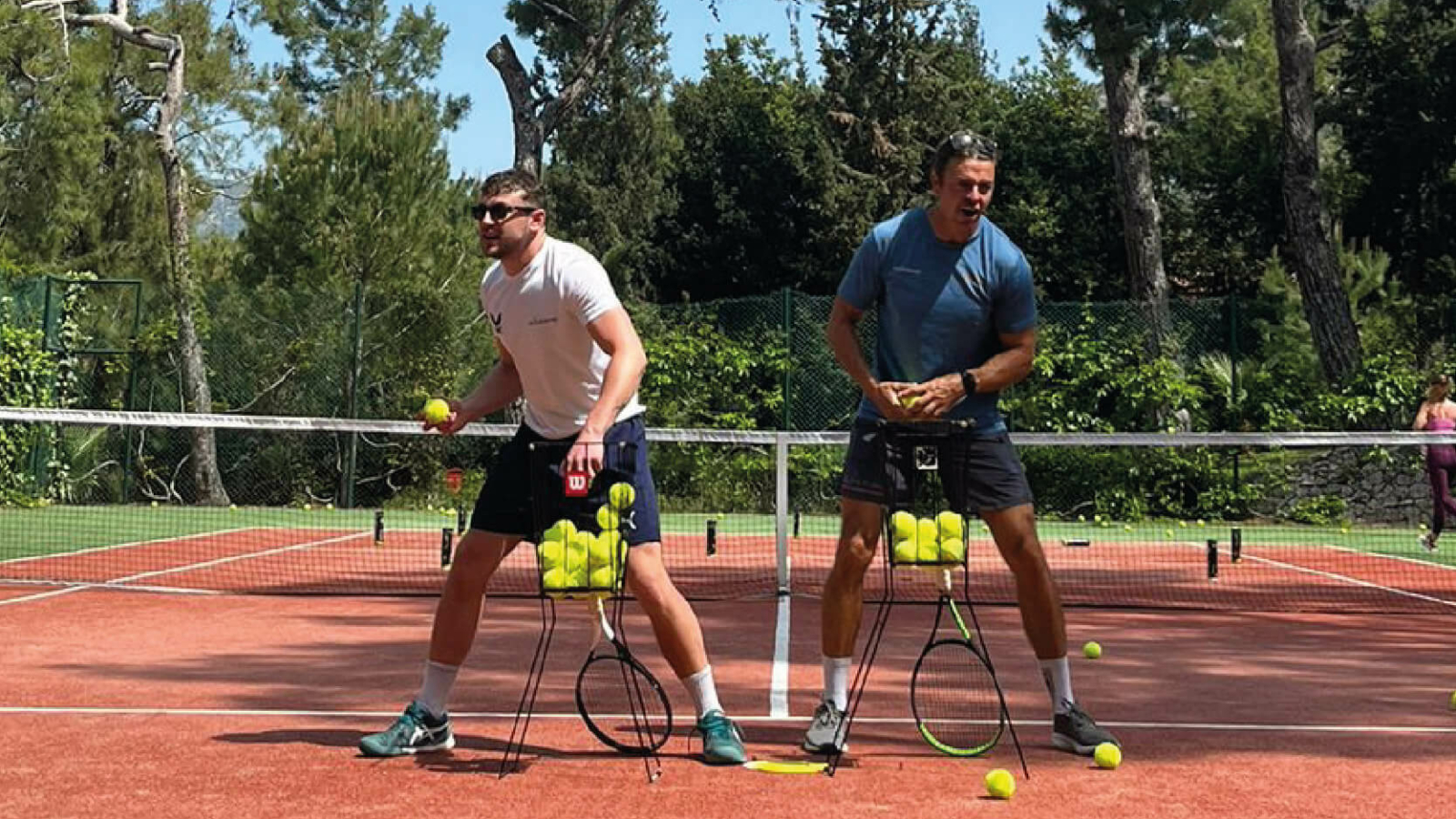
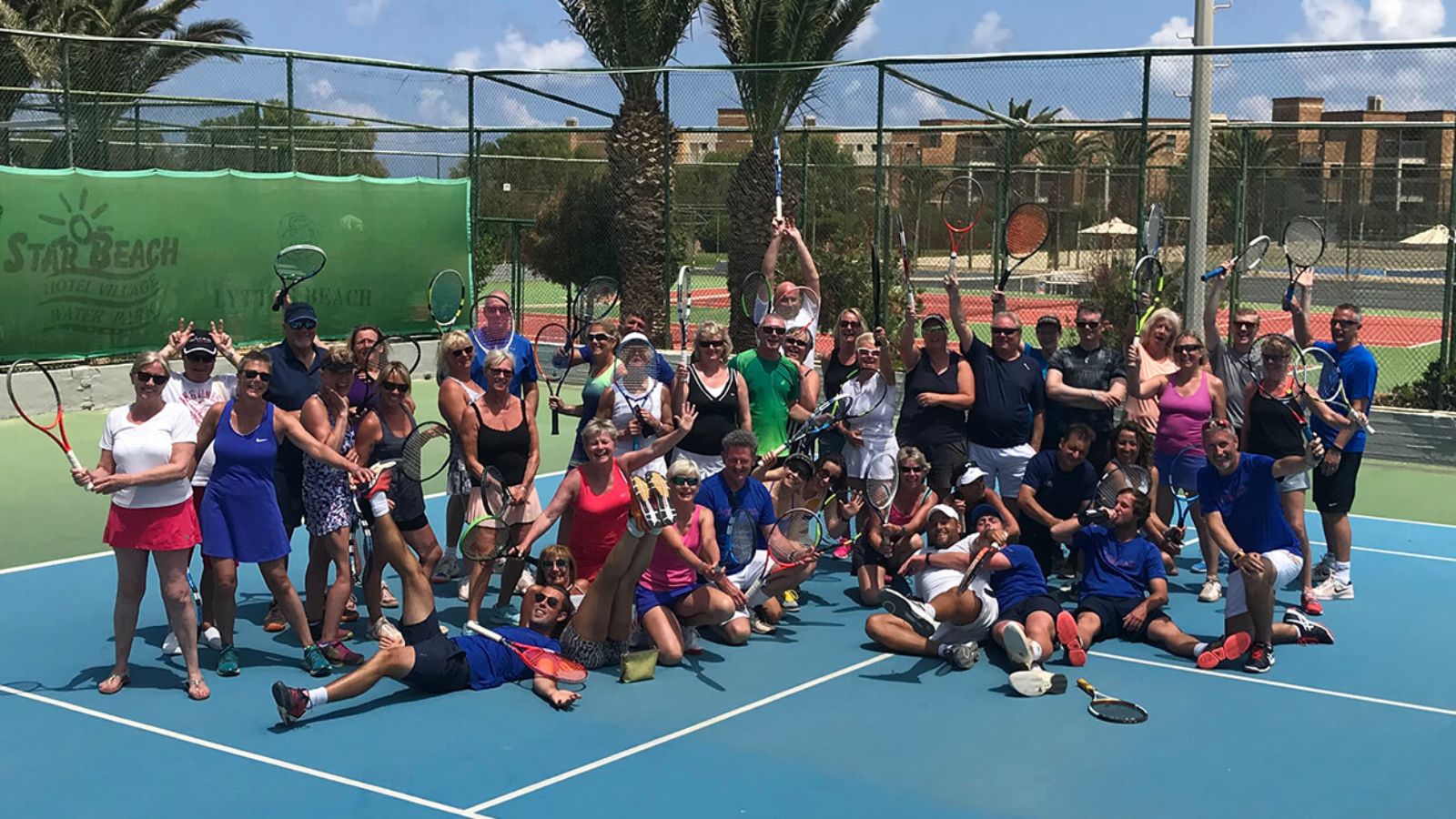
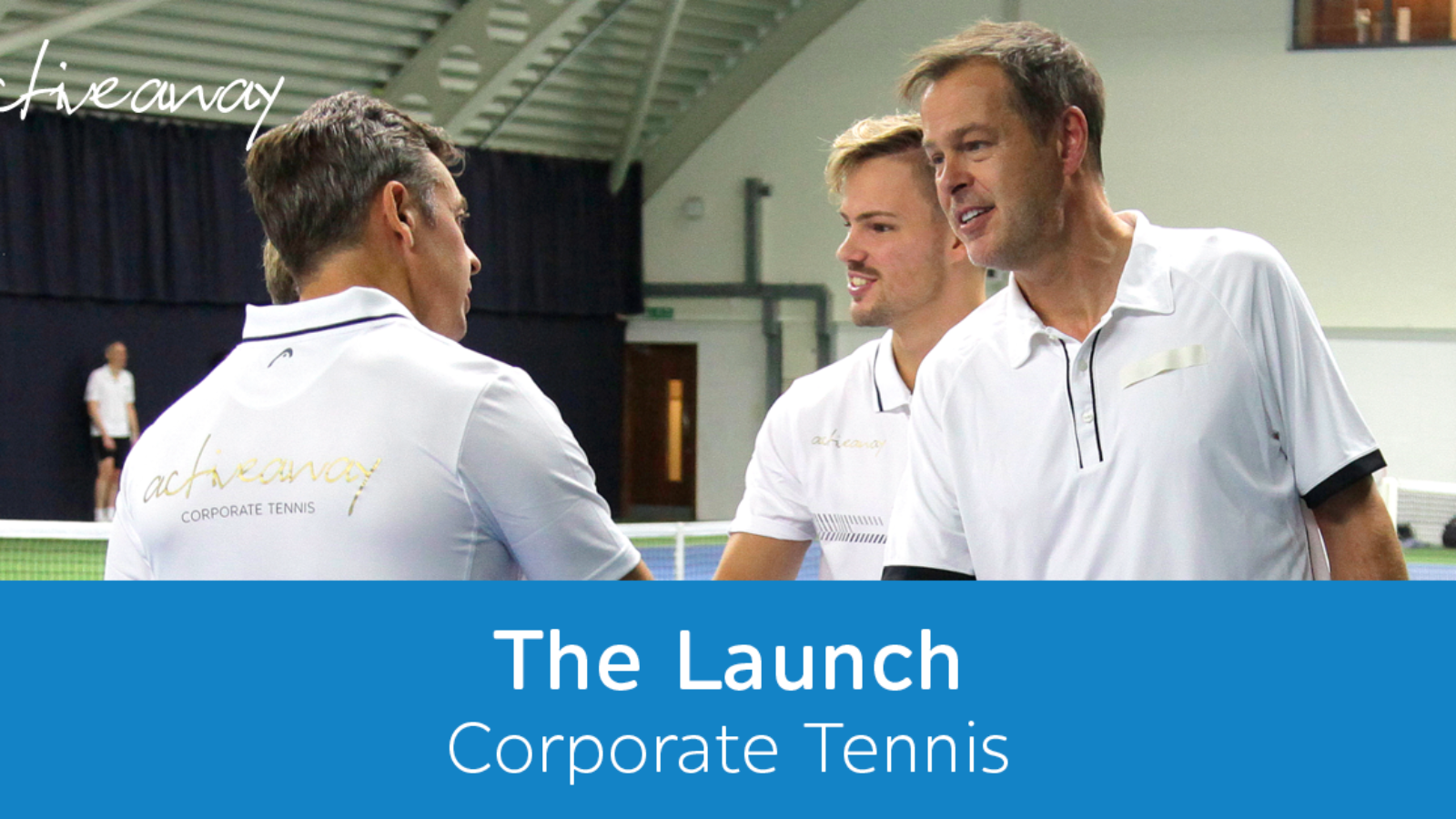
 Just before we broke for lunch, Peter addressed the group thanking everyone for attending before introducing Josh as a new director of the company and giving credit to the hard work of the team behind the scenes.
It was then time for a well-earned bite to eat and Virgin Active Riverside Chiswick laid on a superb lunch of healthy nibbles and refreshments for those in attendance. The lunch also allowed chance for those in attendance to have some time to get to know each other and network amongst the group. Active Away prides itself on the social aspect of these occasions and our Corporate Launch was no exception with the team having chance to catch up with familiar faces as well as becoming familiar with some of the newer ones in attendance.
After lunch, everyone gathered round and listened as the teams were read out for the afternoon’s Pro AM tournament. Guests were organised into teams with a selection of famous names from the tennis world such as Dom Inglot, Marcus Willis, Greg Whitecross and Matt Short all playing in and captaining teams. With timed, quick-fire rounds and sudden death deuces aplenty, the tournament made for enjoyable watching and the banter flew as our guests battled away alongside and against players they’d more often than not only seen on the TV.
Following on from 5 rounds of exciting matches, it was time to find out the winners and for the presentation to begin. After some closely contested matches, Matt’s Moroccans were eventually crowned victorious and each were presented with trophies by Josh in front of the assembled guests and BBC cameras. With that done, there was time for Steve to say a few words of thanks and to present each guest with a goodie bag before it was time to wrap up Active Away’s first ever corporate day! All in all the day was a total success and I think I speak for all of the Active Away team when I say we can’t wait until our next Corporate Tennis Event.
Catch us on the new series of Pitches to Riches!
Just before we broke for lunch, Peter addressed the group thanking everyone for attending before introducing Josh as a new director of the company and giving credit to the hard work of the team behind the scenes.
It was then time for a well-earned bite to eat and Virgin Active Riverside Chiswick laid on a superb lunch of healthy nibbles and refreshments for those in attendance. The lunch also allowed chance for those in attendance to have some time to get to know each other and network amongst the group. Active Away prides itself on the social aspect of these occasions and our Corporate Launch was no exception with the team having chance to catch up with familiar faces as well as becoming familiar with some of the newer ones in attendance.
After lunch, everyone gathered round and listened as the teams were read out for the afternoon’s Pro AM tournament. Guests were organised into teams with a selection of famous names from the tennis world such as Dom Inglot, Marcus Willis, Greg Whitecross and Matt Short all playing in and captaining teams. With timed, quick-fire rounds and sudden death deuces aplenty, the tournament made for enjoyable watching and the banter flew as our guests battled away alongside and against players they’d more often than not only seen on the TV.
Following on from 5 rounds of exciting matches, it was time to find out the winners and for the presentation to begin. After some closely contested matches, Matt’s Moroccans were eventually crowned victorious and each were presented with trophies by Josh in front of the assembled guests and BBC cameras. With that done, there was time for Steve to say a few words of thanks and to present each guest with a goodie bag before it was time to wrap up Active Away’s first ever corporate day! All in all the day was a total success and I think I speak for all of the Active Away team when I say we can’t wait until our next Corporate Tennis Event.
Catch us on the new series of Pitches to Riches! 
